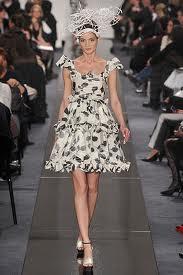
Haute couture is a multi-million dollar per-year industry - though most haute couture creations are extremely costly to produce. However, the notoriety and prestige of haute couture fashions (especially when worn by celebrities) have the unique ability to generate tremendous publicity for a design house - and that almost always leads to higher sales in the designer's ready-to-wear collections, which can often include simplified, more affordable versions of couture pieces.
Paris has been a leader in the fashion industry (both haute couture and ready-to-wear) since the 18th century, when the fashions of the French monarchy at Versailles were adopted by people all across Europe. Wealthy women from all over began to travel to Paris to shop, and the fashion industry there flourished -- French seamstresses and tailors became known as the best in Europe, and clothing made in Paris became known as the best in the world.
By the beginning of the 20th century, several of the first international haute couture houses were established in Paris: Chanel, Lanvin, Christian Dior, Balenciaga, to name a few. These designers used creativity and innovation to establish design precedents, and eventually spawned a second generation of designers -- Pierre Cardin, Yves Saint Laurent, and Emmanuel Ungaro among others. Today, Paris must compete with Milan, Japan, and New York for the title of "epicenter" of the fashion world, but the history of high fashion has its roots firmly in France.
While haute couture designs are often seen as impractical and even "costumey," there is no denying that they represent all that is whimsical and fresh about fashion -- each season designers take risks with materials, cut, and fit, and continually create innovative and inspiring designs.





